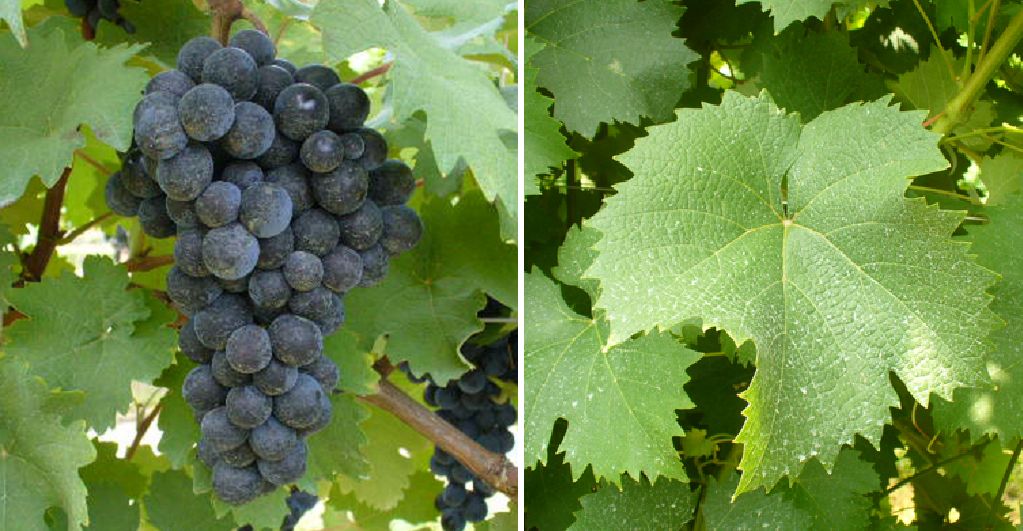The red grape variety originates from Italy. Synonyms are Caccione Nero, Cagnina, Canaiolo, Canaiolo Toscano, Canajolo Nero, Canaiolo Romano, Canajuola, Canina, Cannaiola di Marta, Cannaiola Macchie di Marta, Uva Canina and Uva dei Cani. Despite seemingly suggestive synonyms, it must not be confused with the variety Colorino del Valdarno. The pink-berry Canaiolo Rosa is a colour mutation; however, there is no relationship to the white-berry Canaiolo Bianco (Drupeggio). According to one hypothesis, an ancestor was already known to the Etruscans and was therefore called Vitis vinifera etrusca. What is certain, however, is that it was mentioned as early as 1303 by the scholar Petrus de Crescentiis (1230-1321). The agronomist Giovanni Soderini (1526-1596) described it under the name Canaiuola at the end of the 16th century as one of the best Tuscan varieties. Before the Chianti recipe recommended by Baron Ricasoli (1809-1880), the variety played an important role and was even more important than today's main grape variety Sangiovese from the 18th to the 19th century.

The late-ripening, low-yielding vine yields immensely colour-intensive, full-bodied and velvety red wines with a slight bitter note. Above all, it serves as a blending partner for Sangiovese. Due to its resistance to grape rot during drying, it used to be popular in the Governo process. The variety is mainly found in Tuscany, but also in the regions of Lazio, Liguria, Marche, Sardinia and Umbria. There it is permitted in many DOC/DOCG wines such as Barco Reale di Carmignano, Carmignano, Chianti, Chianti-Classico, Colli dell'Etruria Centrale, Colli Etruschi Viterbesi, Colline Lucchesi, Lago di Corbara, Montecarlo, Rosso di Montepulciano, Rosso Orvietano, San Gimignano, Torgiano, Torgiano Rosso Riserva and Vino Nobile di Montepulciano. In Italy, the variety occupies 1,031 hectares. There is a small stand of 1.5 hectares in Australia. In 2016, 1,033 hectares of vines were reported (Kym Anderson statistics).
Source: Wine Grapes / J. Robinson, J. Harding, J. Vouillamoz / Penguin Books Ltd. 2012
Images: M.I.P.A.F - National Vine Certification Service
Voices of our members

The glossary is a monumental achievement and one of the most important contributions to wine knowledge. Of all the encyclopaedias I use on the subject of wine, it is by far the most important. That was the case ten years ago and it hasn't changed since.
Andreas Essl
Autor, Modena